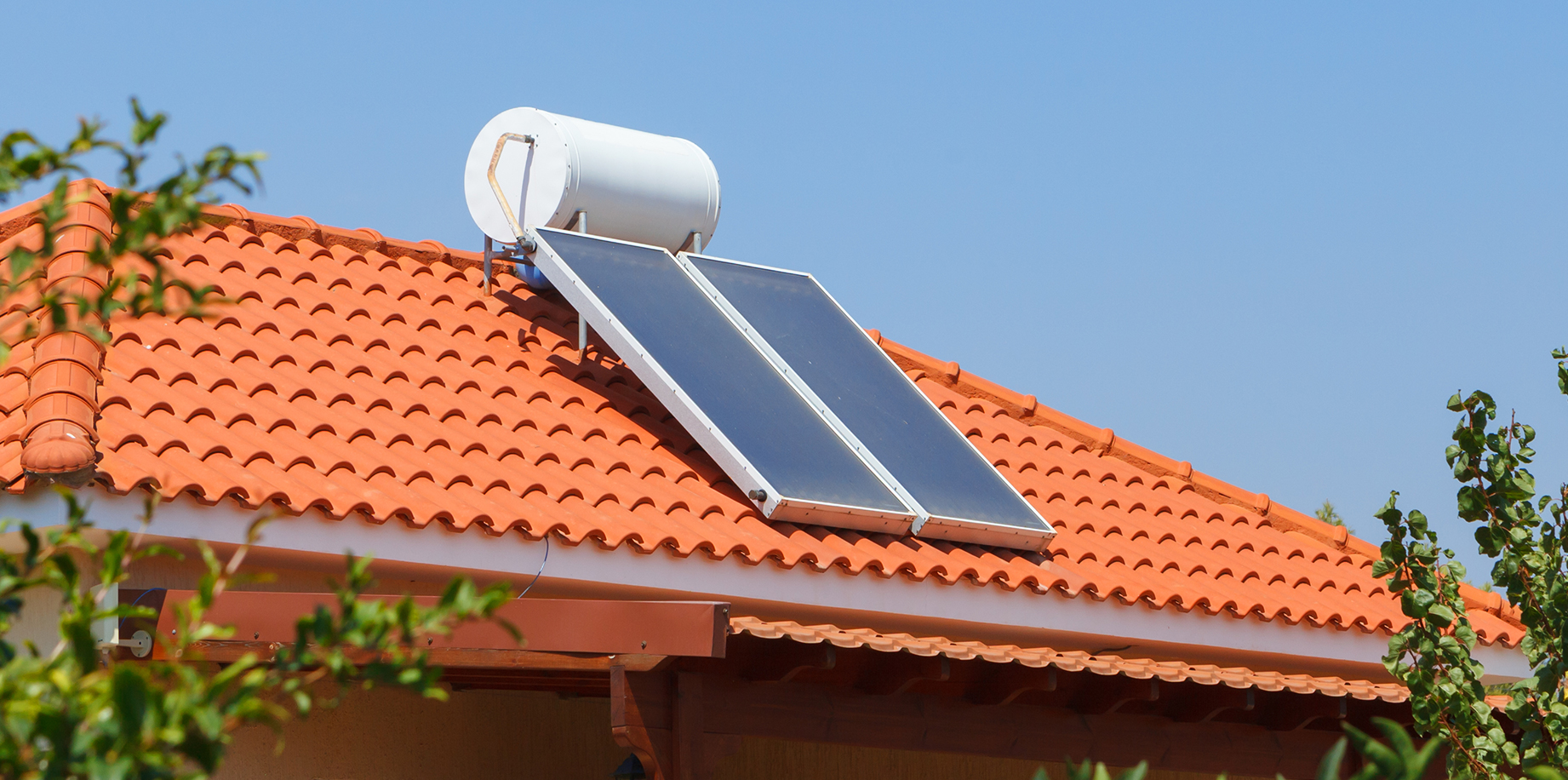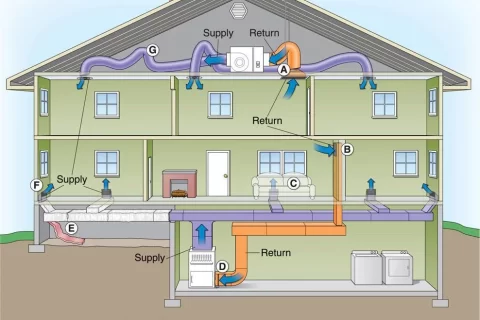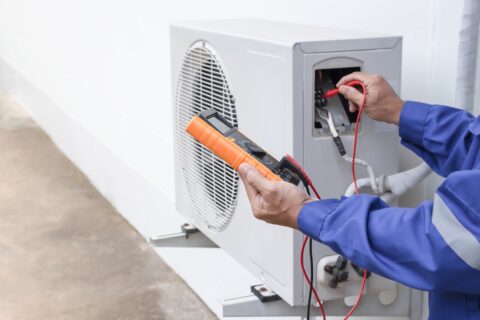Integrating Solar Water Heaters with Existing Systems: A Comprehensive Guide
Key Takeaways
-
Solar water heating systems can easily be integrated with your existing systems. This further improves your energy efficiency and decreases your dependence on conventional energy sources. This provides an optimal integration between solar systems and your existing plumbing.
-
Integrating solar water heaters with an existing system provides consistent hot water, lowers energy bills, and contributes to environmental sustainability by reducing carbon emissions.
-
Even with this potential, proper integration is key to maximizing the improvements in efficiency. For the long-term life of any heating system, either solar or conventional, accurate sizing and professional installation are key.
-
Regular maintenance, such as cleaning solar collectors and inspecting for leaks or corrosion, ensures optimal performance and prevents potential issues in the system.
-
Investing in solar water heater integration offers long-term financial benefits through energy savings, with incentives and rebates available to offset upfront costs.
-
Monitoring and troubleshooting integrated systems can address issues like insufficient hot water supply, temperature fluctuations, and circulation problems, ensuring reliable performance.
Integrating a solar water heater with your existing system will dramatically reduce your energy costs. It’s a wonderful move to encourage long-term sustainable living! These systems use solar energy to generate hot water, which means that they don’t depend entirely on traditional energy sources.
They connect easily with most existing storage tanks and other water heating systems. This versatility makes them a great investment for both residential and commercial properties. Today’s innovative designs focus on achieving seamless integration with existing gas or electric backup systems, guaranteeing reliable performance in the event of cloudy days or higher demand.
Solar water heaters are compatible with all plumbing configurations, reducing installation barriers. This integration reduces your energy use and helps you become a better steward of the environment. As a result, it’s a cost-effective and environmentally responsible way to satisfy routine hot water requirements.
What Is Solar Water Heater Integration
Definition of Solar Water Heater Integration
Solar water heater integration is the term used to describe the practice of connecting solar collectors with already established hot water systems. This arrangement lets solar make a perfect team with traditional heating sources, resulting in a hybrid approach to heating water.
The primary purpose of this integration is to maximize the use of solar energy and lower the cost of energy. Households can maximize their use of renewable energy by using solar collectors to transfer heat to insulated storage tanks. This process improves their performance while protecting their current systems.
In short, how to approach the integration process largely depends on what kind of water heater you currently have. For instance, systems that use tankless water heaters need to be configured differently than those using storage tanks.
Regardless of the situation, with good integration, everything operates smoothly while delivering the most energy savings. It’s a personal process that’s uniquely tailored to the nuances of your plumbing configuration and energy needs.
Importance of Integrating with Existing Systems
A key benefit of an integrated system is the reliable availability of hot water. This is particularly useful during overcast days or the frigid winter season.
With traditional heaters, the unit serves as the backup itself, so you’re never in danger of running out of hot water. It saves money on energy bills every month, as it uses the sun’s free energy to heat water, relying less on gas or electricity.
Integration improves the sustainability of all technologies involved by further decreasing their carbon footprints. This strategy increases the durability of traditional systems.
They undergo less wear and tear overall since they don’t have to carry the load like they would with a standalone solar unit. Seasonal adjustments, such as the ability to tilt or angle solar collectors during winter months, maximize efficiency even more.
Regular maintenance and performance monitoring are key to ensuring cost savings are maximized and long-term benefits are realized.

Benefits of Solar Water Heater Integration
Reduced Energy Costs
When integrated with your existing system, solar water heaters can provide some of the greatest energy bill savings. By using this free solar energy, households can reduce their use of electricity or gas for heating water, reducing overall energy consumption.
In most households, at least 20 gallons are used every day in any given household across the United States. That would mean average monthly savings of $20 to $30, based on local energy rates. Not only are these savings immediate, but over time they continue to accumulate, providing you with an excellent return on your investment.
Less dependency on fossil fuels guarantees savings in the long run, since you’re no longer at the mercy of the changing energy market prices. For the best possible savings, know when you use energy the most. Determine your peak water heating times and configure the system to deliver the most hot water when you need it.
Increased Energy Efficiency
Integrated systems fully optimize the benefits of solar energy by effectively capturing and utilizing the sun’s heat. This optimization removes the need for extra energy from conventional sources, lowering total household energy usage.
With an integrated solar water heater, a typical American family can cut their energy waste in half. That’s a huge benefit compared to traditional systems! Improved efficiency increases the performance of the heating equipment you already have.
It runs less frequently, reducing operational expenses and improving operational capability.
Environmental Impact Reduction
Solar water heater integration has an important part to play in reducing greenhouse gas emissions. By using renewable solar energy to heat their water, households can reduce their overall use of fossil fuels.
This transition has a huge positive impact on the environment by cutting carbon emissions. This transition not only leads to cleaner air, but lessens the burden on our natural resources.
On a macro level, making the switch to solar technologies helps us all work toward a sustainable energy future. Each integrated system is a big leap toward cleaner energy adoption, helping us all to a greener, cleaner planet.
Enhanced System Longevity
By feeding extra energy into your existing systems, you can help increase the efficiency and lifespan of your conventional heating systems. By addressing a large share of the heating load, the stress on gas or electric heaters is reduced.
For example, an integrated solar system can lower the strain on a conventional water heater by as much as 30-40%, saving the unit from an early demise. With regular maintenance of the integrated system, such as cleaning the solar collectors or checking connections, durability is even greater.
A system that is properly maintained has a longer lifespan and operates more efficiently, postponing replacement with expensive new infrastructure.
Technical Considerations for Integration
Properly integrating a solar water heating system into an existing hot water system can be a challenge, necessitating thoughtful planning and consideration of various technical factors. Each step is critical to ensuring maximum efficiency and long-term performance of the solar collectors.
Assessing Compatibility with Existing Systems
The first step is evaluating how well your current setup can work with a solar water heater. Factors like the type of water heater you use—tank or tankless—and its capacity are key. For instance, a small electric tank may limit compatibility with solar technology.
Plumbing configurations matter, too. Systems with complex layouts may need adjustments to accommodate the solar components seamlessly. A professional assessment is invaluable here. Experts can thoroughly inspect your system, identify potential challenges, and recommend the best ways to incorporate solar heating without disrupting your hot water supply.
This evaluation ensures that the integration is smooth and effective.
Evaluating System Size and Capacity
Properly sizing a solar water heater is extremely important. A system too small might not meet your household’s hot water needs, while an oversized one could waste energy and resources. You want an accurate calculation that takes into account your daily hot water needs, number of household occupants and peak demand times.
A typical family of four uses more than 80 gallons of hot water per day. In order to supply that demand, they would need a collector with more than twice the surface area and a storage tank with at least 80 gallons of capacity. By modeling usage patterns such as when individuals take showers or do laundry, we can better optimize the size of the system.
This allows it to function effectively and reliably.
Choosing the Right Solar Water Heater Type
There are two main types of solar water heaters, active and passive systems. Active systems – which rely on pumps and controllers to circulate water – are better for larger homes or homes in colder climates. Passive systems, which use gravity and natural circulation, are considerably simpler and usually more economical for smaller installations.
The ideal choice will depend on what your current heating system is. If you have a gas water heater, plan to integrate an active solar system with it. This combination can significantly increase compatibility and efficiency. Household needs often play a role in this decision, too.
A home with very high hot water demand would be better served by an actively controlled system with several collectors.
Ensuring Proper Plumbing and Piping Connections
The underlying plumbing work during integration must be safe and effective. Using high-quality materials, like corrosion-resistant pipes and fittings, is key to preventing leaks and ensuring the system’s longevity. Insulating pipes reduces heat loss, which is crucial for outdoor piping that’s more susceptible to colder, external temperatures.
More complicated installations or those in older homes with aging plumbing should be handled by a trained professional. Only talented plumbers can make sure these important connections are made while minimizing risks and keeping the system functioning as designed.
Understanding Temperature Control and Regulation
Temperature management is a critical component of safety and successful operation. These controllers remotely monitor the system, making changes to flow rates and temperatures automatically or as needed. The right settings mean the water gets heated enough—but not too much—without straining the system.
Installing mixing valves provides another layer of safety by keeping water from ever reaching scalding temperatures. A tempering valve mixes the hot and cold water going to your faucet to ensure water coming out stays at a safe 120°F. This not only protects users but saves energy as well.
Installation Process for Integration
The detailed installation process for integrating a solar water heater with an existing system ensures the two systems work together seamlessly and efficiently. The process takes great intention, specialized know-how, and strict following of protocols.
With a well-planned process, you can deliver high-quality heating performance and long-term energy cost savings.
Preparing the Existing System for Integration
Preparation is key for the installation process of solar water heating systems to go smoothly.
-
Conduct a site assessment: Identify the best location for solar collectors, typically on a south-facing roof with direct sunlight. A standard system needs about 40 to 60 square feet of roof space.
-
Ensure that your existing setup is compatible with solar components. Local authorities often require documentation to meet building codes.
-
Collect solar collectors, storage tanks, piping, and insulation.
Installing Solar Collectors and Storage Tanks
Mount solar collectors securely with heavy-duty brackets so they can stand up to the elements. Position storage tanks to capture ambient heat where possible.
Insulate tanks to minimize heat gain and evaporation. As always, be sure to read and follow the manufacturer’s directions throughout the process.
Connecting Solar Components to Existing System
Connect new solar collectors to old plumbing by matching new flow rates. For active systems, fasten electrical components tightly.
Add backup heaters to ensure hot water is available year-round, including in winter months.
Testing and Adjusting the Integrated System
Make sure to test after installation to ensure everything is working correctly. Set temperature settings appropriately for energy efficiency and perform annual inspections to ensure the system is working at peak performance.
For many homeowners, the cost savings can be as much as 70% on their water heating bills.
Maintenance Tips for Integrated Systems
Caring for an integrated solar water heating system is straightforward. By adopting a uniform maintenance approach, you can ensure your solar heating system operates efficiently for years. Here’s a breakdown of essential maintenance tips to maximize performance.
-
Plan consistent inspections – Monitor for leaks, detect problems early, and maintain system security.
-
Clean solar collectors regularly to ensure maximum sunlight absorption and optimal energy efficiency.
-
Monitor system performance metrics to identify any issues early.
-
Inspect antifreeze levels and replace or replenish fluids to avoid freezing or overheating.
Regular Inspection of Solar Collectors
Solar collectors work best when they’re clean and unobstructed. Dirt and debris can block sunlight and reduce efficiency. Monitor and maintain your equipment.
Inspect all integrated systems at least biannually to ensure continued optimal performance! Check for signs of wear and damage, including cracks and discoloration. Create a maintenance plan with routine checks to identify issues before they require significant repairs.
For instance, homeowners who live in regions with intense pollen seasons or dust storms should inspect their systems more often.
Cleaning and Preventing Debris Accumulation
Routine debris removal is essential to ensure collector functioning and longevity. Scrub with a soft brush or non-abrasive cloth to lift dirt and debris without damaging surfaces.
Don’t use harsh chemicals that can harm the collectors. Remove leaves, bird droppings, or anything else that casts shade or limits sunlight. If your collectors are on a pitched roof, bring in an experienced professional to protect yourself.
Monitoring System Performance and Efficiency
Tracking performance metrics over time makes sure that the system is still operating the way it should. Most of these integrated systems have controllers that show real-time data such as temperature and flow rates.
Use these to establish goals for greater efficiency. When your system is significantly lagging, it’s time to tweak your system. For instance, think about angling the collectors seasonally to get more direct sunlight.
Checking for Leaks or Corrosion in Connections
Even small leaks and corrosion can wash out any gains and severely impact system performance. Dew point condensation can form on integrated system piping or joints, so look for signs of moisture or rust during routine inspections.
Replace worn seals or fittings immediately to prevent water damage. Always install corrosion-resistant materials such as stainless steel or treated copper to prevent aggravating the problem in the future.
A routine, annual professional inspection will identify hidden issues before they become obvious failures.
Troubleshooting Common Issues
Having been in the field for several years, integrated solar water heating systems are highly efficient, yet they’ve occasionally faced challenges in maximizing their effectiveness.
-
Insufficient hot water supply during peak demand.
-
Temperature fluctuations affecting user comfort.
-
Pump or circulation problems leading to inadequate heat transfer.
-
Pipe leaks that compromise system integrity.
Addressing Insufficient Hot Water Supply
Inadequate hot water typically occurs when the capacity of your hot water system does not align with the needs of the home. If your family is larger than average, ensure that your system includes a larger solar collector and adequate storage capacity. Without these features, the system may fail during peak hours.
Troubleshooting common issues always begins with checking your system settings. Make sure the thermostat is set to an appropriate level for your hot water needs, generally no higher than 120°F. If you find that hot water runs out too quickly, consider upgrading to a larger solar heating system or adding a secondary backup heater.
Proper insulation of storage tanks and circulating pipes significantly aids in maintaining the heat where it belongs, enhancing the efficiency of your hot water systems.
Fixing Temperature Fluctuations
Temperature instability could be due to faulty controllers or sensors. Temperature controllers, which monitor and control water heater or tank temperature, can trigger sudden temperature changes if they are set wrong or broken.
Look for any sign of sensor wear or misalignment. Fine-tune mixing valves, which blend hot and cold water, to produce a uniform temperature. If you give them a regular calibration, they’ll run a lot more smoothly.
Resolving Pump or Circulation Problems
Circulation problems usually start with pump breakdowns or clogs. When troubleshooting, the key is to first listen for symptoms like strange pump noises, or measure flow rates.
It may be that a clogged pump limits the transfer of heat and therefore efficiency. Cleaning filters and joints regularly, for example, avoids these issues. When it comes to big repairs, professional help guarantees they’ll work the way they should.
Identifying and Repairing Pipe Leaks
Leaks can both make the system more inefficient and damage private property. Check for wet areas near pipes or other signs, like a sudden drop in water pressure.
Use high-quality distribution materials, such as copper or PEX, to reduce risk. Immediate repairs help avoid more extensive long-term damage, and regular annual inspections can sometimes identify early signs of leaks.
Cost and Savings Analysis
Initial Investment vs Long-Term Savings
The upfront cost of installing a solar heating system is significant, typically ranging from $6,000 to $10,000. This cost varies based on the size and type of the system and covers the hardware, installation, and necessary adjustments for integration with your current water systems. While this may seem like a daunting first-time investment, the energy savings potential from solar water heating systems can significantly offset these initial costs over time.
Transitioning to solar energy technologies can provide many households with electric water heaters the opportunity to pay far less for their home’s hot water production. In reality, they can save anywhere from 50% to 80%! Additionally, energy prices heavily influence the payback period; in areas with high electricity or gas rates, savings can be immediate. This increase in savings allows homeowners to recoup their upfront investment in a shorter time frame.
The second step in this process involves analyzing your household’s hot water usage patterns. Families that consume a high volume of heated water should see faster paybacks due to their greater dependence on solar heat. Consider long-term financial savings and evaluate your energy demands to determine if solar integration aligns with your budget and long-term sustainability objectives.
Ultimately, investing in a solar heating unit can lead to significant environmental benefits, making it not only a smart financial decision but also a step towards a sustainable future.
Understanding Payback Periods
The payback period refers to the time it takes for the energy savings to equal the initial investment in the solar water heating system. This timeline will vary based on several factors including energy prices, system efficiency and how much hot water you use each day.
In sunny states where energy prices are higher, an ultra-high efficiency system might pay for itself in as little as five years’ time. In less ideal conditions, the payback is still around eight to ten years.
To determine this, look at your old energy bill before going solar and your new bill after going solar. If your household saves about $600 annually on energy due to the solar system, a $7,000 initial cost would yield payback in approximately 11-12 years.
Using historical energy cost data to predict future energy savings provides you a much better understanding of when your investment will begin to pay dividends. Recognizing this timeline is key to establishing appropriate monetary expectations.
Potential Incentives and Rebates
Thanks to government incentives and rebates, these systems can be quite affordable, often with costs reduced by half or more. The federal solar tax credit allows you to deduct 30% of your solar installation cost from your federal taxes. This benefit has the potential to save you thousands of dollars in out-of-pocket expenses.
Further, dozens of states have their own rebate programs, grant programs, or programs that provide low-interest loans for renewable energy projects. For instance, California’s Solar Initiative offers rebates tied to system performance, rewarding more efficient configurations even more.
Doing the work to research local programs is key to reaping these rewards. Browse resources like the Database of State Incentives for Renewables and Efficiency (DSIRE) to find opportunities where you live.
Applying for these incentives usually requires specific documentation, such as proof of purchase and proof of installation, so being organized is essential. Follow our ongoing coverage of these important policy changes to get the most out of your savings. Staying informed about new or updated programs can go a long way!
Conclusion
Integrating a solar water heater with your existing system is a no-brainer. It saves money on energy bills and eases the load on conventional heating systems. The process can be a bit daunting, but with the right planning, education, and assistance it is a simple process. It’s important to keep the system well maintained to maximize the solar benefits and save money in the long term. By fixing these issues upfront, you save yourself expensive repairs down the road.
You don’t have to completely redesign your system to reap the rewards. A truly well-integrated system made to meld with your existing spokes. The savings in taxpayer dollars and carbon emissions make the effort worthwhile. If you’re committed to reducing expenses and making a greener, smarter decision, start the journey today. Contact a solar professional and find out how solar water heating can work with your home.
Frequently Asked Questions
What is solar water heater integration?
Solar water heater integration involves connecting a solar heating system to your current hot water systems, maximizing your home’s use of renewable energy technologies while ensuring compatibility with your existing water heating infrastructure.
Can I integrate a solar water heater with my traditional gas or electric water heater?
Can solar water heating systems be integrated with existing setups? A backup heater will supplement the hot water supply during cloudy days and in high-demand situations.
What are the main benefits of integrating a solar water heater?
Further reducing energy costs, lowering the carbon footprint, and increasing energy efficiency through solar heating systems integration helps make communities more resilient and sustainable. It additionally qualifies for tax credits and other incentives, leading to considerable long-term cost savings.
How long does it take to install a solar water heater integration?
Installation of solar heating systems usually only takes 1–2 days, depending on the complexity of the solar collector heating system and size of the home. A professional installer ensures proper setup and smooth integration.
What maintenance is required for an integrated solar water heater system?
Occasionally clean your solar panels and inspect for leaks in your solar heating system. Tracking system performance and scheduling an annual professional inspection can help catch problems and ensure maximum efficiency.
Is it expensive to integrate a solar water heater system?
While costs for solar water heating systems do vary, they generally range from $2,000–$8,000 including installation. Although the upfront investment may be significant, tax credits and energy savings from solar heating typically cover that cost in short order.
What should I do if my integrated solar water heater is not working properly?
First, inspect the solar heating system for leaks, blockages, or power supply issues. If the issue continues, call a qualified service technician for further diagnosis and repair.


